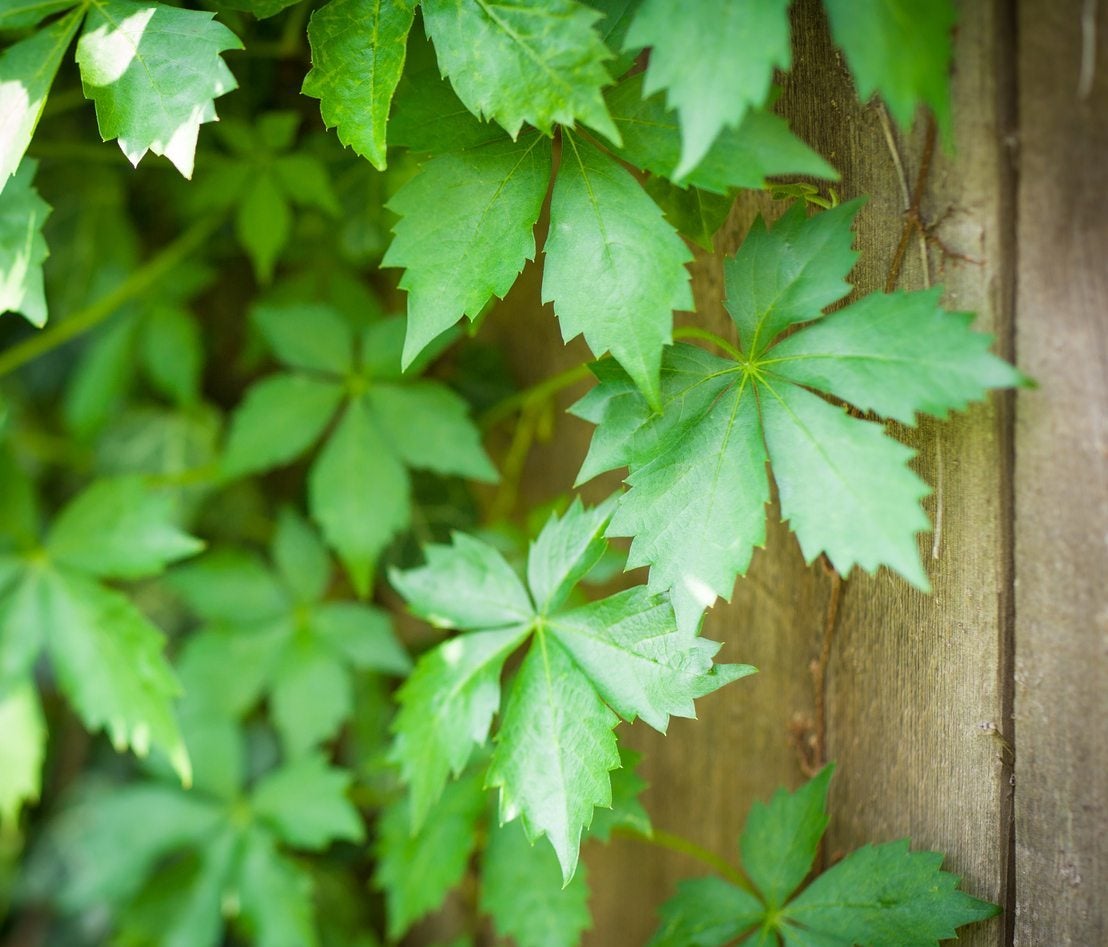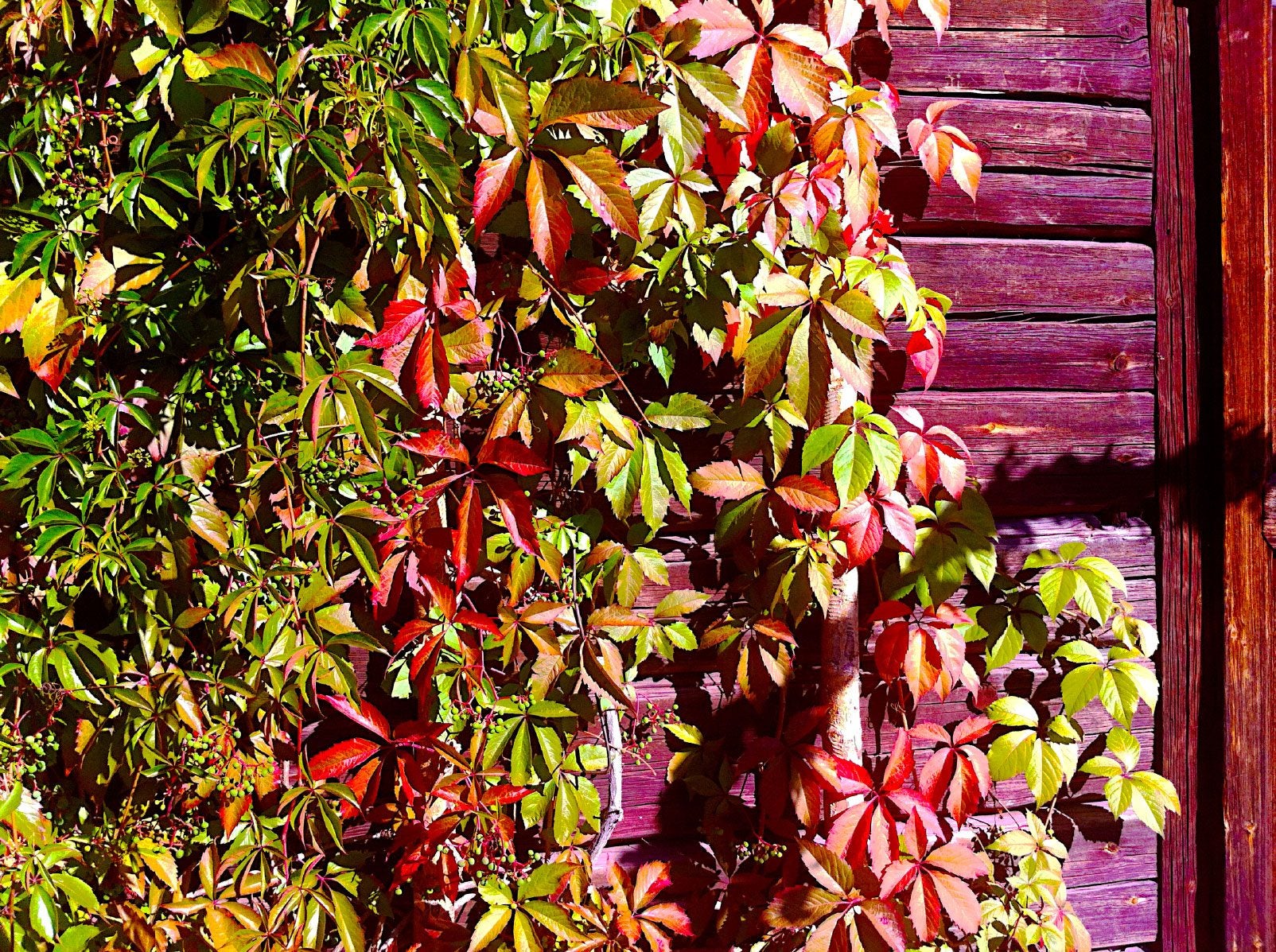Virginia Creeper Container Care – Tips For Growing Virginia Creeper In Pots


Virginia creeper is one of the most attractive deciduous vines, with deep green leaflets that blush to scarlet in the autumn. Can you grow Virginia creeper in a pot? It’s possible, although Virginia creeper in containers require more work than the same plants in the garden soil. Read on for information on Virginia creeper container care including tips on growing Virginia creeper in pots.
Can You Grow Virginia Creeper in a Pot?
Virginia creeper (Parthenocissus quinquefolia) is a popular garden vine, and it grows in a wide variety of climates. It can thrive in USDA plant hardiness zones 3b through 10. This vine grows fast and can get up to 50 feet (15 m.) if left to its own devices. Virginia creeper doesn’t require a support to climb, since its tendrils cling to brick, stone, or wood by sucker disks at the tendril tips. It can also creep along the soil and makes a good groundcover. Can you grow Virginia creeper in a pot? It is possible if you are careful with Virginia creeper container care. There are some definite problems that you’ll have to keep an eye out for though.
Problems with Container Grown Virginia Creeper
Growing Virginia creeper in pots is tempting if you love the vine and don’t have much space in your backyard. It’s truly a lovely plant and its fall color display – when the leaves turn bright scarlet – is spectacular. In addition, birds love the berries the plant produces. However, container grown Virginia creeper may not be as lush and lovely as you would hope. A healthy vine in garden soil is incredibly vigorous, and Virginia creeper in containers may not show the same abundant growth. In addition, the roots of Virginia creeper in containers can freeze much faster than those deep in the soil. This is especially true if the containers are small.
Growing Virginia Creeper in Pots
If you want to give container grown Virginia creeper a try, here are a few tips: Generally, this vine should be planted where it has room to grow and expand. So, for container grown Virginia creeper, use as large of a container as possible. Recognize that Virginia creeper in containers will dry out much sooner than plants in the soil. You will have to water it much more frequently. If you go away for a vacation during the growing season, you’ll need to get a neighbor or friend to water it for you. This is doubly true if you position the container in full sun, which gives you the best fall colors. Take care that the Virginia creeper doesn’t jump the pot and escape. Some find the vine very invasive if left to its own devices. Keep it trimmed and controlled to prevent this.
Gardening tips, videos, info and more delivered right to your inbox!
Sign up for the Gardening Know How newsletter today and receive a free copy of our e-book "How to Grow Delicious Tomatoes".

Teo Spengler is a master gardener and a docent at the San Francisco Botanical Garden, where she hosts public tours. She has studied horticulture and written about nature, trees, plants, and gardening for more than two decades. Her extended family includes some 30 houseplants and hundreds of outdoor plants, including 250 trees, which are her main passion. Spengler currently splits her life between San Francisco and the French Basque Country, though she was raised in Alaska, giving her experience of gardening in a range of climates.
-
 Looking For Plants To Give You The Soft And Fuzzies? Try These 5 Fuzzy Leaf Plant Options
Looking For Plants To Give You The Soft And Fuzzies? Try These 5 Fuzzy Leaf Plant OptionsLovers of texture, drama, silver foliage and tactile plants will adore these special sensory garden additions. These fuzzy leaf plant options will leave you all aglow
By Susan Albert
-
 Get Ready For A Summer Of Hummers! Grow These Full Sun Hummingbird Plants and Flowers
Get Ready For A Summer Of Hummers! Grow These Full Sun Hummingbird Plants and FlowersIf you’re lucky enough to enjoy a sunny backyard, make sure you are maxing out on your pollinator opportunities and grow these full sun hummingbird plants and flowers
By Tonya Barnett
-
 Virginia Creeper Control & How To Get Rid Of Virginia Creeper
Virginia Creeper Control & How To Get Rid Of Virginia CreeperMany gardeners become frustrated with Virginia creeper, as it chokes out everything in its path. However, this article provides tips for getting rid of Virginia creeper vines to alleviate those frustrations.
By Susan Patterson
-
 Virginia Creeper Maintenance: Growing Info And Virginia Creeper Plant Care
Virginia Creeper Maintenance: Growing Info And Virginia Creeper Plant CareA vigorous and fast-growing vine, the Virginia creeper is an outstanding plant for nearly any soil and light situation. Learn how to prune Virginia creeper vine in this article. Click here for more info.
By Bonnie L. Grant